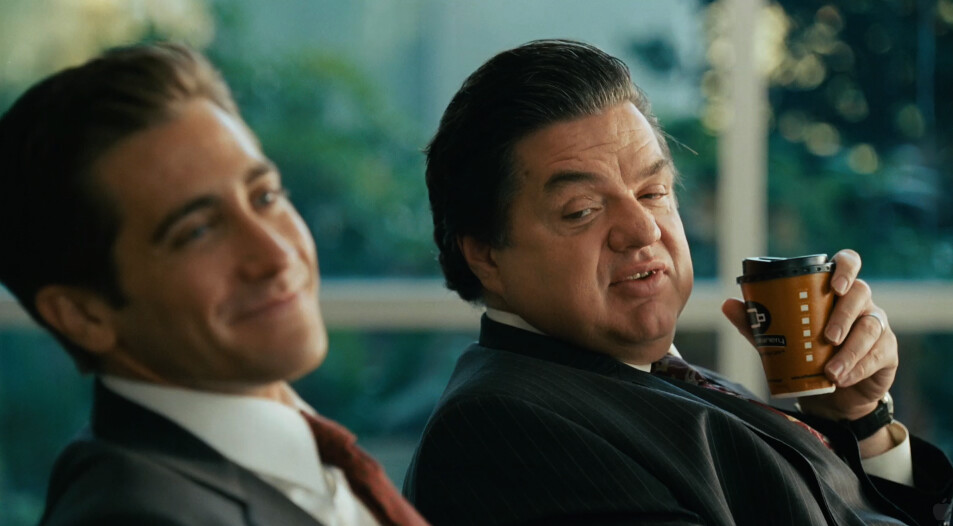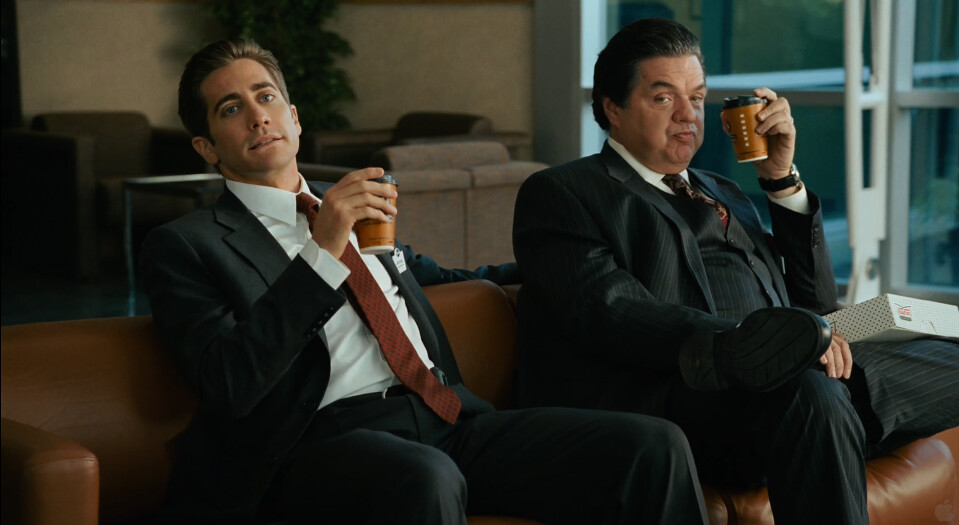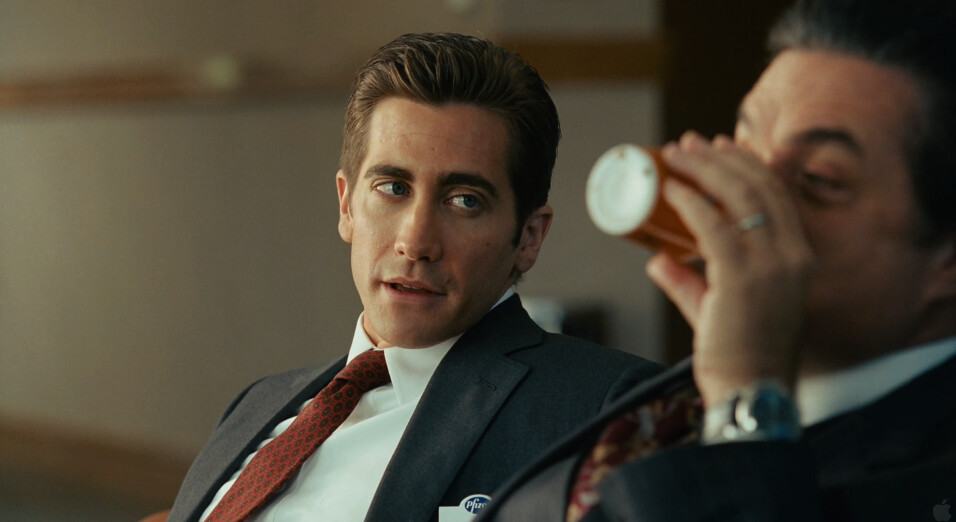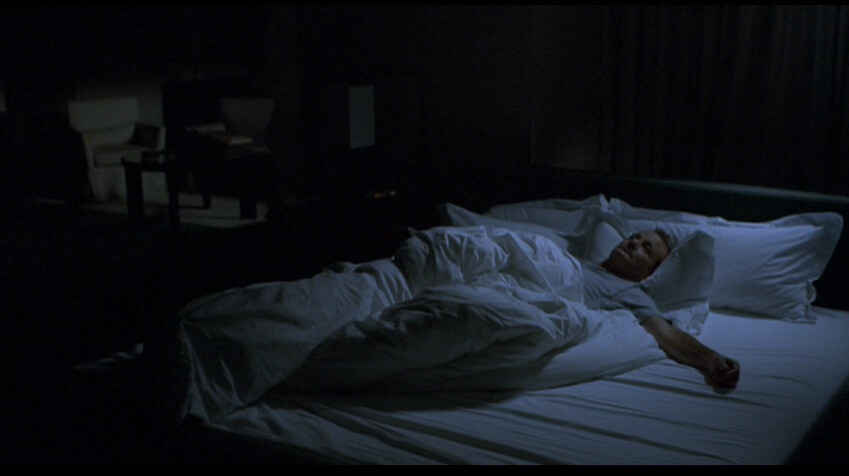
Ronald Gerald Smith
-
Posts
72 -
Joined
-
Last visited
Posts posted by Ronald Gerald Smith
-
-
As always, you both are very helpful.
ND gels it is.
-
I don't have a lot of experience cutting down Kino light because usually I don't need to cut any light down, but I'm just asking in case I am stuck in a position where it needs to be cut down.
What is your favorite way of cutting these things down?
Of course the easy way would be to turn off bulbs but I would prefer not to turn any bulbs off because it shrinks the size of the light source.
Floziers might be an option because they come in singles and doubles and if I need to cut it down by two stops then I can just put two double floziers on there. This might be a good option, but if I want a more harsher less diffused light then I will need to think of something else.
ND gels? Fabric scrims?
I hear ND gels are not so good because they get a color shift over time. But the color shift is mostly due to high temperature correct? And kinos don't get too hot, so ND gels might be a good option.
Also fabric scrims are a little too small for the 4ft 4 bank kinos.
-
This is sort of a beginner's question but I am wondering if there is a way to rig up two more more 18x24 fabric open ended scrims (for the purpose of cutting down intensity of a light more than 1 stop) on one c-stand? Just want to save some space. I wish they made nets that go all the way up to 3 or 4 stops. That would be cool.
I don't really like to use wire scrims if I can help it. Anybody else prefer the fabric to the wire?
-
You could also create some slashes of hot sunlight with some Joker 800 Source-4 Lekos if you could rent some.
David,
What would be the advantage of using the Joker in a Source 4 configuration rather than a standard arri 575 or a 1200 hmi par with barndoors narrowed? I am assuming the joker is going to give a sharper cut and more defined slash, but is there any special reason why you would choose one over another for the specific use of creating slashes of sunlight?
-
The chinaballs will definitely work and give you proper exposure. It's easy to find 3200 watt household bulbs here in the US, but the 2800 ones aren't bad too, just need to white balance for it like you said. I would definitely have a couple smaller fresnels like 200-650 watt to add little accents here and there, or put a blue gel on it to motivate the light from the projection. Also for medium and closer shots, you might not want the deep shadows in the eyes so a good bounce board will be good. Just to match closer with the china balls if you are using warmer bulbs, bring some 1/8 or 1/4 cto gels to match the fresnels with the china balls.
Or instead of china balls you can bounce like a couple fresnels on the ceiling or one of those white walls for your main source. If you don't need 360 degree coverage, might save you a little time rigging up those china balls.
-
Hi everyone,
I'm currently trying to fit an upcoming shoot into it's budget and looking for places to save some money. Does anyone have any experience with a 1st AC pulling focus while the camera is on a tripod/doorway dolly? Or is a real dolly with a seat for the 1st AC an absolute necessity?
Thanks a lot!
I've done this all the time and have seen this done all the time. However it is quite necessary to have sideboards on the doorway dolly (which most doorway dollies have). A seat is not necessary. With sideboards on it will no longer be able to fit through a doorway.
Oops: I just noticed how many replies this got. I thought I was the first to reply! Dumb me!
Ya'll can delete this post if needed.
-
Hey All,
For this location, I can't mount anything on the ceiling. I need to have everything on stands. I need to however have a china ball above a certain spot, and I need room for a coffee table and for the dolly to pass through. So I need to have a stand and a really long arm extending and then a china ball at the end.
What is the best way to do this? Please explain step by step with all of the items that I need. I'm a novice.
-
Thanks,
I ended up going with the Chimera Triolet with 500w and 1000w bulbs in a Video Pro Plus1 Small Lightbank, lighttools 40 degree eggcrate, with an extra full CTB add on. And it works excellent!
-
the lantern locks are fantastic. no complaints at all. china ball boom poles are frequently a painters pole or something similar. you might use a robust sound boom pole but...
Thanks, I am glad to hear that they are good. How would you go on attaching the painter's pole to the lanterlock? Is there a specific adapter that you can use?
-
I am considering buying one of these, but I wanted to find out from others on their opinion of it. It's not cheap, priced at $85 at Filmtools. It does seem like it would be better than just going with the wire setup, so the bulb doesn't swing around loosely, plus I will mount it on a c-stand. What do you all think about these things? Is it worth the price or should I just go with the traditional China ball setup? Also, I have tried the Chimera china balls. They are fantastic but is not what I want to go for at this time.
Also, I am hearing about a lot of people booming china balls. What kind of pole would they use to boom them? I am hoping not a traditional sound boom pole?
-
Here is a link to the trailer, which will give a better idea of the cuts and the context of the scene as a whole.
-
I know that it is attractive for the far side of the face to be lit brighter than the near side. But I find that some times it is taken too far, as people will sacrifice continuity for it. I know that this is almost a late-night rant on my part, but I see this so often in films, especially the newer studio produced films, such as the upcoming "Love and Other Drugs" starring Jake Gyllenhaal.
I know that these lighting continuity changes don't generally make the average viewer protest angrily, but these are some major lighting changes. I do see this all the time. But I most often see this on closeup singles, or over the shoulders, or dirty two shots (whatever you call those shots). Are these the only types of shots that allow this type of drastic lighting change? How do you all feel about lighting like this? Does it distract you? Do you accept it as a natural way of lighting a set?
Check out the following stills:



-
Really? So you think if he was lying in complete darkness the filmmakers would have just cut to a black frame?
I think there's an awful lot of filmmakers that light the darkness so the audience can see what is happening, even though the characters cannot.
Yes, plenty of situations in movies (and a lot of television) where the characters are stumbling through the room because it is too dark for them to see. But we need to some some kind of exposure to know what is happening. I apologize for stating the obvious, but I am just trying to stay in the conversation.
On the other hand, I think that it is beautiful and often cinematically effective when there are vast dark spaces that reflect what the human eye should be seeing in darkness, such as the great film Kanal, and also many of the scenes in 4 Months, 3 Weeks, 2 Days, where the main character is walking through areas of pure black, and occasionally hit with a light from overhead (those china hat style street lampshades).
I agree with Mathew on his views, and also acknowledge that some filmmakers (especially bad ones) take it way too far. It's kind of awkward to see a man stumbling through a hallway, and there is a full blue moonlight coming through the windows.
-
Excellent. Thanks for sharing this!
-
Scripty to DP "Where's that light coming from? There's no window or lamp there"
DP "Same place the music is coming from."
Did you ever hear a conversation like that take place? Forgive me for lacking the know-how to get the joke, and I kind of understand what you are talking about, but what would music have anything to do with the lighting of the film? Is it partly to do with suspension of disbelief?
Roger Deakins wrote in his website:
"For the dolly shot in 'A Beautiful Mind' I used a low bounce over the transparency. Very simple really. The trick is to make it look as if the light is coming from where it should be coming from without it being an obvious trick. But it is always a trick of some sort. It is interesting how easily, in fact, the viewer can be tricked."
-
I am seeing a lot of motivated sources hanging above, much higher than where they actually should be. For example, many people know that its common to correctly expose a window with curtains, without it blowing out or losing detail, and placing one or two Kinos or softboxes above the window.
Sometimes in bedroom setups, where a person is sitting on a bed, for example, there are lights (seemingly motivated) that are coming from a direction that is much higher than it should be. Look at the provided picture, especially at the shadow being cast by the light hitting the man's face:

Taken from I Am Love Trailer.
This kind of lighting (faking the angles), can sometimes takes the naturalism out of the shot. I am wondering if you know some clever techniques of motivating the light. For example, what are some elegant looking ways to make the light look like it is actually coming from the lamp? I know that rule #1 is to never have a lit lamp cast a shadow of itself---this being a clear indication that there is another light source hitting it. I am sure that this is accomplished by careful placement and/or flagging. I know that china balls with regular household bulbs are used often to create a soft, motivated looking source. Any other ideas?
Also, leading back to my first observation, of lights being placed higher than it would be. For example, look at this behind-the-scenes still of the great David Mullen, ASC in action:

Taken from woodylight.com
Two out of three lights are coming from above, and most of the lights are supposed to be motivating lights that are on table tops or are low-level.
Take a look at this shot from Lost in Translation:

This is lit by a moderately soft overhead source, controlled well so that only the bed is lit. However, we know that most likely there is no skylight in a hotel room. It seems almost impossible for the light to be coming from that angle. However, it looks nice. The frame looks good, and everything looks natural. What is it about the magic of soft overhead lighting that allows it to be used in situations where it "shouldn't" be used, especially when thinking of it in a totally naturalistic perspective?
Why is this done so often? I am sure it is because of flexibility of shot coverage. And when does this kind of placement become unnatural, and unacceptable? And how does this kind of lighting pass as naturalistic? A light could be coming from above where it should be and I wouldn't even blink twice. It looks very natural to me. Maybe it is because it is more difficult for me to figure out where the light is coming from when it is a soft source lit from above. It is easier for me to find out where the light is coming from when the soft source is coming from the subject's eye level. What do you think?
-
What country do you live in Ron?
Hey William,
I live in the United States, so after hearing some responses over at some other forums, and including this forum, it is quite clear that the 120V option is the correct option.
Thank you all,
Ron
-
Hello,
I am considering getting a Barger, and it comes in either 120v vs 240v. What would be the advantages of both? And what would be recommended if I planned to use this light most on practical home/non-studio locations?
Thanks,
Ron
-
Yeah, if you're going for bigger than 1k those options won't really work for you.
A fresnel is, as you supposed, very inefficient for the purposes of using with a chimera, you're giving up at least a third to half your light for that clean beam.
a 2K open face like a mighty mole is certainly better (still somewhat directional, but you will get a higher percentage of footcandles out of the lamp).
The problem I've found in the past with these lights is that the yokes often aren't strong enough to hold up a larger chimera, which can be a very annoying issue I've had to solve with bailing wire before :) This is definitely a problem with the arrilight 2k and 2k Blondes, I think the Mighty mole is a little sturdier, but for some reason I never use those.
Also 2k open faces tend to be somewhat poorly ventilated and get very very hot.
The Barger is definitely your best bet for a greater than 1k tungsten chimera if you can afford it. I use them frequently and have always been happy with them - they are well ventilated, have a strong yoke, and the switchable globes makes changing intensity a breeze. My gaffer likes to get the 6k with Edison tails, and put a dimmer on one of them for maximum flexibility.
One caveat is that if you're looking for more throw, using a mighty mole with thinner diffusion and spotting it in can give you that (at the cost of softness of light). You can't spot a barger.
Is there a good reason why you've never used the Mickey/Mighty Moles? For some reason they look very strong, but I can see that when they are in a chimera setup, they might become poorly ventilated and get very hot, much like the Arrilites.
From what I deduced so far from posting on forums, and with a lot of influence from your post, I can see that a good setup is to get a Medium Chimera Video Pro Plus 1 with a Mogul Base with speedring, and equip a 1k bulb inside of it. This will be strictly for smaller closeups and mediums, where the light can be less than 6 feet away from the subject. For bigger wider setups, a Barger 6-lamp with Large Chimera would be the most flexible.
Perhaps I should just get the Barger 6-lamp with Medium and Large Quartzbank and call it a day.
-
Any directional light isn't optimal for a chimera because the light is focused and then fired into the diffusion, which gives you a smaller source. The baffles usually aren't far enough away from the front diffusion to give a really good double break.
Your best bet for the softest light is to go for essentially a bare globe inside the chimera. You'd be giving up the flexibility of the light being useful without the chimera so that's a choice for you to make.
Rifa lights (by lowel) are great, lightweight and quick to set up. Perfect for interviews, but they're a little delicate for the rigors of full time production (unless you can afford to replace them often, but they're great for a handheld key)
Alternatively the triolet is a pretty cool head if you want to go with the quartz bank.
Hey Mathew,
Thank you for the reply, and this gives me a lot of ideas.
By 'directional', do you mean some kind of fresnel light? Or would an open face flood light by either Arri or Mole be considered directional as well? I am curious to see the quality of light coming from an open face light.
I do like the idea of having a bare globe inside the chimera, and know the kind of soft light that is produced by a mogul base bulb inside the Chimera Lantern model. This is great for closeup to medium length shots, but when I want to cover a group of people and when I am using a large 54x72 inch quartz bank, I need something bigger than 1000 watts. That's why I need a kind of fixture that I can punch out at least 2000 watts with. I've looked at the Barger, and that looks like a great option---but I can't know for sure because I've never used one. If something like a Mighty Mole or an Arrilite 2000 looks great with a Quartz bank, filling up the screen nicely, then this would be a cheaper option.
-
Hey Guys!
My first post on this forum. Glad to be here.
I'm looking in to investing in a Chimera Softbox. I love the way it looks, and the way it wraps light around the face. But there are so many options when it comes to a Chimera - there are daylight, daylight jr, video pro, quartz bank.
The Quartz bank looks the best to me, because it can handle higher temperatures and also is a lot shallower than the daylight banks, and it is only slighter deeper than the video pro.
I am wondering what sort of lights would be better for a Quartz bank? Money is not too much of an issue, but I would like to stick with tungsten rather than any HMI. I have to choose between Arri or Mole open face lights, Tota light, the Lowell 1k, and I am open to any other suggestion. I have heard that Arri open face lights can melt, because of their plastic casing, so I am leaning more towards a Mickey and/or Mighty Mole. Money isn't really an issue, so I want the softbox/lamp combo that is the prettiest, wraps the best, and overall is an excellent match for the softbox. I know that this is all very subjective, but I trust all of your judgement!
Thanks!
Ron


Application of Silver Reflectors or Shiny Boards
in Lighting for Film & Video
Posted
I'm familiar with using bounce boards and 6x6 ultrabounce outside in the sun but I have not put so many shiny boards to use so I wanted to learn from your experiences with them.
What are some of the ways that you all have put these to use both outdoors and indoors?
Do you all like to use them mostly for creating an edge for the subject? Maybe at the front of the subject you can light them with direct sunlight diffused with silk and then you can give them an edge on either side with a shiny reflector bounces? I know there are tons and tons of ways to use them probably but I wanted to get an idea of what you all like to do.
As for practical application of the shiny boards, do you like to bounce direct sunlight or is that too harsh for your taste? Do people bounce ambient non-direct light at subjects for main frontal key light or fill light? (sorry if I sound like a noob using terms like key or fill light but that is the best way i can describe it at that moment). Would bouncing non-direct sunlight with shiny boards be ineffective or totally inefficient? I know that it's not the best idea to do it with white foam core or bead board because it doesn't reflect much light at all but maybe shiny boards would be more effective at bouncing non-direct light than foam core?
And if you have any other ideas for using shiny boards that would be very welcome and I would appreciate it.